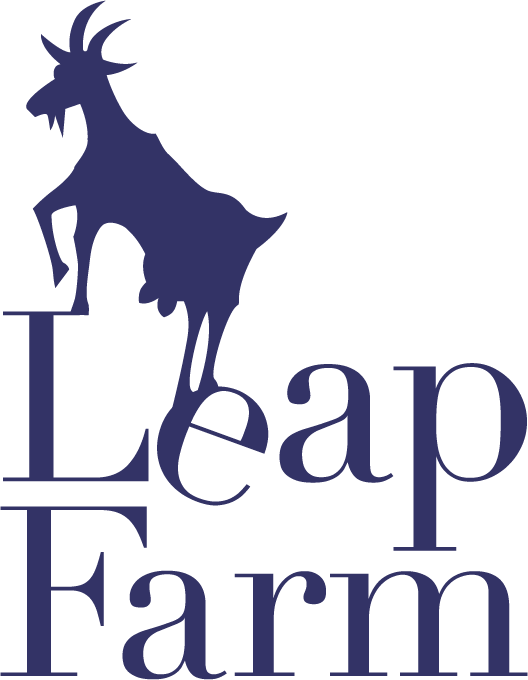One of the benefits of coming into farming at a later age is that you aren't bound by conventional thought processes or ways of doing things. Some of the practices we have at Leap Farm are met with disbelief by some farmers, and milking once a day is one of those.
Once-a-Day milking has been adopted more widely in New Zealand than in Australia, and is becoming attractive to cow dairy farmers over there. Many of the producers there have found that, after the transitioning process from twice a day to once a day has occurred, productivity is hardly different - 98 % of twice-a-day volumes in good herds and broadly 80 - 85 % of twice a-day volumes across all herds (New Zealand Dairy Exporter, October 2016, www.farmersweekly.co.nz). But what is different is the health of the animals: once a day (cow) milkers have less lameness and higher "in-calf" rates after 6 weeks (that is, they fall pregnant more easily because they are in better condition). The added benefits come in time saved by the farmer (and frees up time and money to make improvements on the farm elsewhere), less costs running the dairy twice a day, less water use, less effluent to manage, and on it goes. In other words, the cost structure is so much lower, with equivalent volumes of milk production, so profitability improves, and animals and farmers are less stressed and tired, and less likely to burn out and suffer other mental health issues.
There is limited research into Once-a-Day milking for cow diaries, and even less for goats, but that hasn't stopped us. We made a decision right at the beginning of this journey that we would be once-a-day milkers. Partly because Kate was working off-farm full-time and unable to help out on the farm except on days-off, and partly because it fits better with our ethos of ethical and sustainable farming. Interestingly, we have found that our production is equivalent to, and sometimes better than a similar goat dairy that milks twice a day. We also crunched the numbers, and found that this is more profitable as well as more sustainable for us, largely due to the lower input costs and reduced labour hours.
So how does it work?
The goats and their kids free-range in our paddocks (through which they rotate, depending on the time of year) during the day, all together. In the evenings, the herd returns to Home Paddock, at which point we open a gate to let the Mums in, keeping the kids and non-milking goats out in the paddock, where they can access shelter overnight if they want. The Ladies head into their shed where they get a feed of micronised barley and then settle down on the composting hay floor for the night. In the morning, we milk the girls, and then after we're done, they go out and join the youngsters, and then head off into the paddock en masse. And so it starts again.
Feeding the kids each morning. I realised that I had finally found my perfect job.
Tabby's kid has been fed, and basks in the sun, waiting for the next kid to join him in the paddock.
The benefits for the kids are that they get mum's milk, and seem to grow better because of it. It also means that we don't need to feed them, which is both an expensive and time-consuming operation. It would potentially add about 3-4 hours of work to the day, not to mention the actual costs associated with feeding. Understanding mammal physiology helps: the multiple suckles that the kids get during a day stimulates the cells in the udder to produce more milk, increasing milk production.
Other advantages include less animal-animal caused injury as the kids are integrated into the herd from the beginning. We are also able to keep the boys and allow them to grow, rather than getting rid of them at or soon after birth. We divert them into meat production once they reach adequate size (around 12-18 months of age). Allowing them to have a (good) life, rather than being an unwanted by-product of the industry that is removed as soon as practicable, is integral to our ethical and sustainable manifest.
The kids rush up the laneway to wait for the gate to be opened and reuinted with their mums.
One of the disadvantages, that we have learnt the hard way, is that the kids can become very flighty. Unless they are handled by humans from an early age, their instinct, as with all animals that are predated upon, is to stay well clear of us. Which is not ideal when you need to milk them! So we have worked hard this spring to tame them up. For the first 4-6 weeks, once separated from their mother overnight, they would snuggle down together in the old dairy building. In the morning, while Iain milked, Kate would give them all a feed of milk. This daily handling (and food on an empty stomach) has resulted in calm, tame kids, that love nothing more than a scratch behind the ears. We are a lot more confident that the little girls from this years' drop will be far easier to manage on the platform.
The morning greeting - all those little stripy faces!
Currently, this system is working for us. Whether this will be sustainable in the future remains to be seen - when we get to 100 milking does, we'll be looking at feeding 200 kids each morning. This year we were feeding about 60, and that process took about 45-60 minutes. It will be interesting to see how we develop our systems to maintain our operation in the future.






